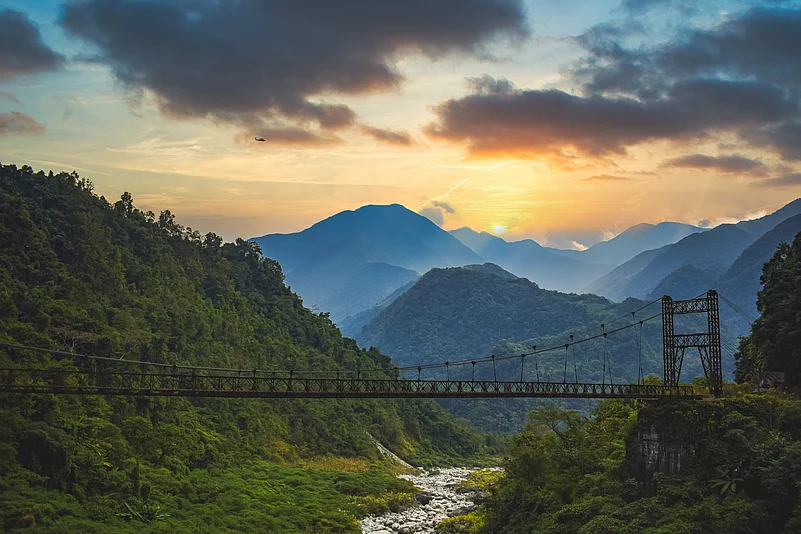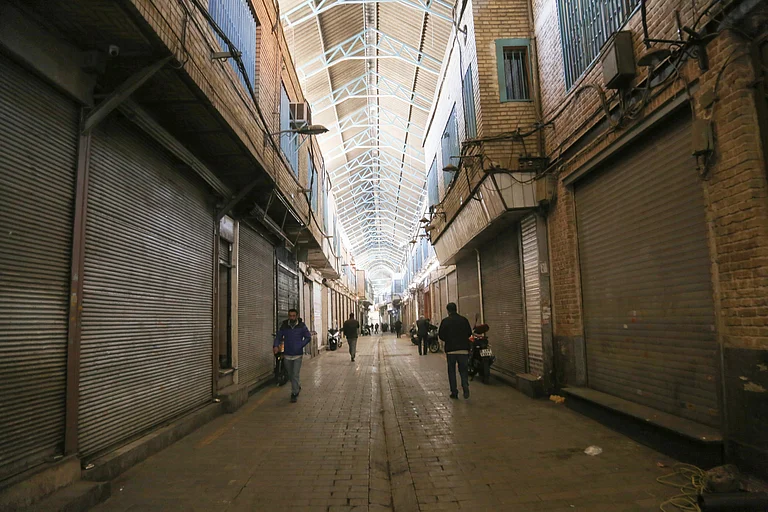The “Seven Sisters” which make up the north-eastern states of India are home to over 220 ethnic groups across Arunachal Pradesh, Assam, Manipur, Meghalaya, Mizoram, Nagaland and Tripura. Sikkim is also a north-eastern state but is left out of this grouping; instead it is referred to as the “Brother” of the “Seven Sisters.” Collectively, these eight states have a predominantly humid sub-tropical climate with hot and humid summers, severe monsoons, and mild winters. Along with the west coast of India, this region has some of the Indian subcontinent's last remaining rainforests, which support diverse flora and fauna.
The people of this region continue to practice their traditions and customs till today. Migration flows from Tibet, the Himalayas, present-day Bangladesh and Myanmar have led to intermixed cultural traditions, an example of which can be found in the cuisine of the states.
Here’s what you need to know about visiting Northeast India.
The Gateway To The Region
Guwahati in Assam is the largest city in the region and the first stop for visitors travelling to Northeast India. You will likely land at the Lokpriya Gopinath Bordoloi International Airport (GAU) first. This cosmopolitan city on the southern fringes of the mighty Brahmaputra River is home to the revered Kamakhya Temple, an 8th-century temple which attracts devotees throughout the year. Apart from temples, river cruising in the feisty Brahmaputra is a magical experience, with rock climbing at the Elephant Rocks in Morigaon, about 78km away, coming a close second.
Furthermore, Guwahati is home to a number of trekking trails and breathtakingly-beautiful camping sites. Check out the UNESCO World Heritage Site of Kaziranga National Park and the Pobitora Wildlife Sanctuary in the Morigaon district to see the Indian rhinoceros. For a cultural experience, visit the Srimanta Sankaradeva Kalakshetra which preserves and promotes the cultural, social, and linguistic identity and heritage of the people of Assam.
Permit Information
Foreigners typically have had to register for Restricted Area Permits (RAP) and Protected Area Permits (PAP) when they visit the Northeast due to sensitive security issues along the borders of Nagaland, Arunachal Pradesh and Mizoram that abut China.
Since October 2023, the Indian Ministry of Tourism has eased such restrictions in order to promote the region as a tourist destination. Foreign travellers can now explore these states through organised tours that must be arranged by a local tour operator based in the respective state. The tour operators will handle all the necessary arrangements, and the rejection rate for foreign tourists in these states is minimal. Keep in mind that if you are visiting a Tibetan settlement or camp, you are required to register for a PAP.
However, foreign tourists are required to apply online for an electronic Foreigners Regional Registration Offices (e-FFRO) document prior to travelling to Northeast India. They are required to complete this process within 14 days of arriving in the country. Keep abreast of the latest information on the Ministry of Tourism’s website.
Getting Around
Due to the hilly terrain, the landscape is prone to landslides during the monsoon season. Furthermore, the remoteness of the Northeast region poses some obstacles to those wishing to go deeper into the territory. However, tourist infrastructure is improving fast as the Indian government focuses on transforming the states into ecotourism hubs.
While the Indian railway network connects most states, it is better to explore the land by either state government buses or private and shared jeeps. It is best to hire experienced drivers who can navigate the terrain so check with your tour operator about this or hire a private operator of your own accord.
Other Tips
English is the preferred medium of communication in Northeast India but it’s best to learn basic phrases in Assamese, Meitei, Sikkimese and Nepali when you are visiting.
While metro cities like Guwahati have modern facilities like food delivery and other emergency services, chances are that after midnight all services will stop till early morning. If you are travelling across state lines then there are certain places that remain open the whole night only to offer essential services for tourists. It is recommended that you find out whether this is indeed the case by asking your hospitality providers and tour outfitters or enquiring at police stations.
Arguably, the best time to visit Northeast India is between October and April as heavy monsoon rains at other times make travel very difficult and possibly dangerous due to the possibility of landslides. During winter, the upper regions of the Himalayas will be pretty cold so pack warm clothes and ask for extra blankets and hot water with your accommodation providers.





















